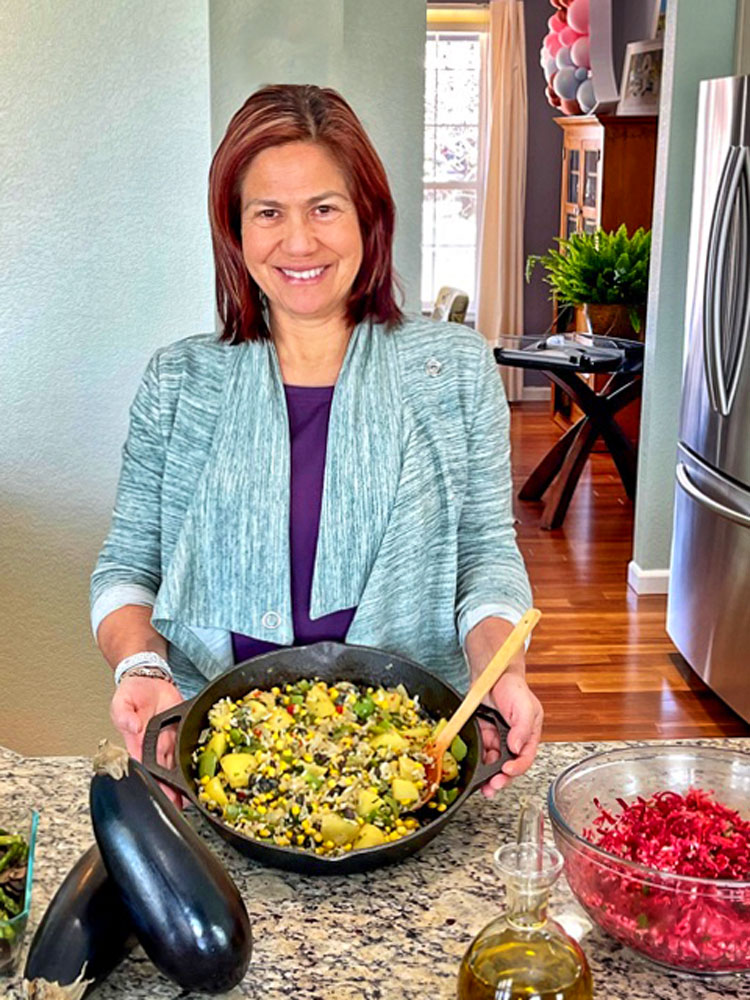Cooking with cast iron
By Lisa Nicklanovich; photo courtesy of Hilda Trigoso

Hilda Trigoso loves cooking her favorite Peruvian recipes in the cast iron pans she has had for more than 20 years.
Hilda Trigoso has had her cast iron pans for more than 20 years. “My mother-in-law back in Brazil was the influence for me to get one,” Trigoso shared. “She always cooked for us in her big cast iron pan and always praised how much better everything cooked in it was. So, when I got my own kitchen, I had to have one or two.”
Cast iron is often credited for getting the perfect sear on juicy steaks, roasted chicken and vegetables because once the pan is hot, it stays hot. Breakfast to dessert, a cast iron pan can cook nearly anything. Another reason cooks love cast iron is that it can be used on a stovetop, in an oven, on an outdoor grill or over a campfire.
In addition to its versatility, there are quite a few benefits to cooking in cast iron. Unlike older nonstick cookware which uses harmful chemicals in the coating, cast iron is non-toxic. The naturally-nonstick finish gets better over time, and heating a little oil or butter works well to ensure food won’t stick. A boost of iron is also a benefit, as some iron is transferred into the food you are cooking.
Many people think cast iron is high maintenance, but it is easy to clean and take care of. According to Lodge Cast Iron, the company that has been making cookware since 1896, just wash the cast iron by hand with water and a small amount of soap if needed. Water is the enemy of iron, so dry the pan promptly and thoroughly with a lint-free cloth or paper towel. Then, rub a very light layer of oil onto the surface.
Lodge pans come seasoned (since 2002) and are ready to use, but “seasoning” a cast iron pan just involves heating the pan with a little cooking oil. With each use, a layer of seasoning is added, which is why being given a well-seasoned cast iron pan is a valuable gift to a home cook. Cast iron pans are easy to maintain although a little bit more cumbersome because they are heavier than regular pans. “Once you start using them, you will like them so much that being heavier will not matter,” Trigoso said.
“I am Peruvian which means cooking almost every day from scratch using lots of onion and garlic seasoning. There’s just a special flavor cooking in a cast iron pot that you cannot get from a regular stainless steel pot,” Trigosa exclaimed.
For more information about caring for cast iron – from seasoning to cleaning, – as well as recipes, visit www.lodgecastiron.com.